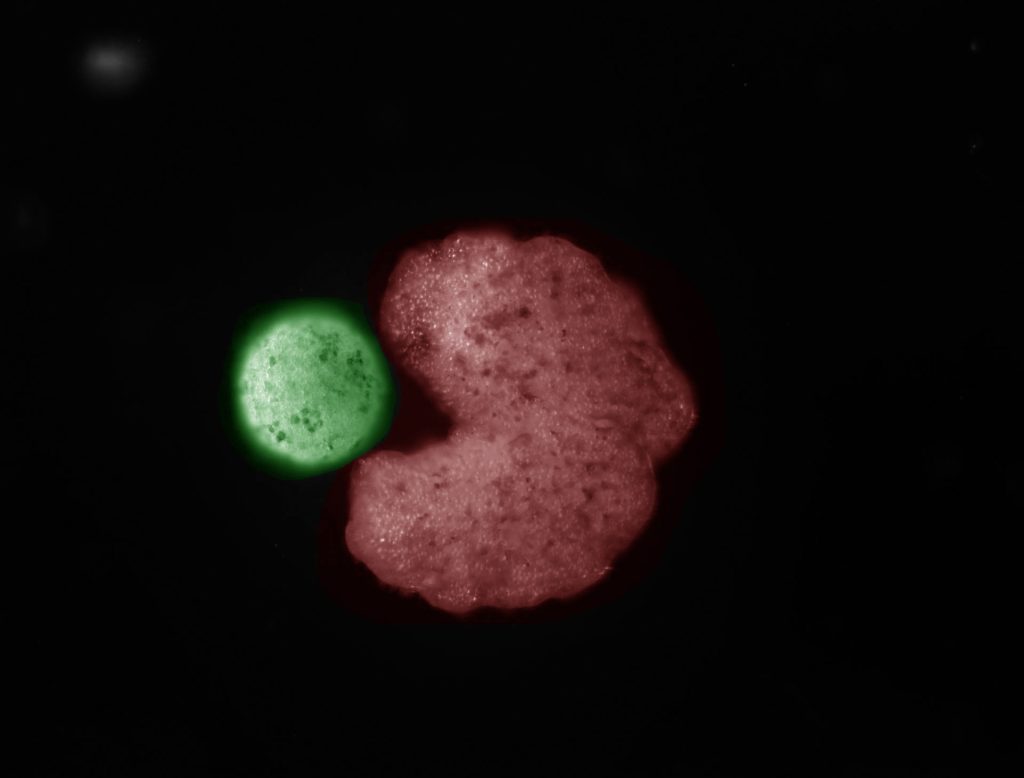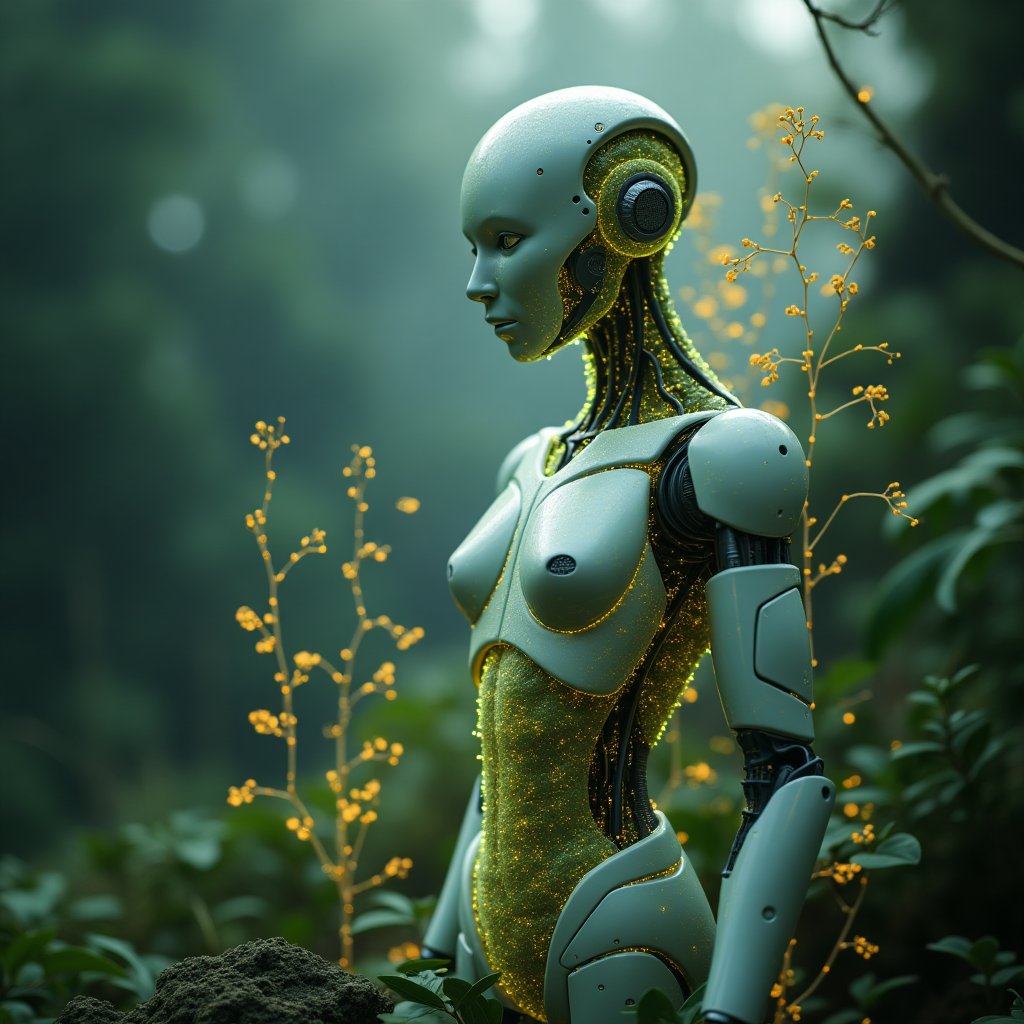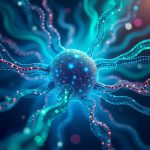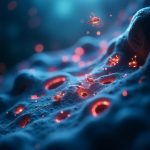Introduction: Setting the Stage for a New Era
Not every revolution kicks down the door with flashing lights and loud proclamations. Some sneak in quietly, reshaping the world before we even notice. Think about this: What if the robots of tomorrow don't clatter and hum or feel cold like the machines we've always imagined? What if they grow skin, repair their own wounds, and even age with time? These aren’t just whimsical sci-fi dreams; they're the inevitable results of a groundbreaking fusion between artificial intelligence (AI) and biology. Walk into a hospital twenty years from now, and instead of a human surgeon, you might see a robot that moves and heals as fluidly as flesh and bone. Pause for a moment—at what point does that machine stop being ‘just a tool’ and start being something… more?
The day robots begin to grow and heal isn’t just about technological wow-factor. It’s about redefining life itself, blurring the lines between organisms and machines, and challenging our fundamental assumptions about what it means to be alive. From prosthetics that adapt to the wearer’s changing body to machines that can repair themselves in space, these advances are rewriting reality as we know it. But as with every innovation at the edges of possibility, it comes with questions: What ethical dilemmas could arise? How do we regulate machines with lifelike qualities? Have we engineered a future miracle—or a new Pandora's box?
This article dives deep into the transformative world of bio-inspired robotics, dissecting the science, exploring the technology’s real-world applications, and wrestling with its ethical and sociological ramifications. From the lab to the big screen—this is the story of robots crossing the line between metal and life.
I. Current State of Bio-Inspired Robotics
Before we unravel the bleeding-edge breakthroughs like self-healing robots or AI-guided growth mechanisms, let’s trace the roots of bio-inspiration in robotics. Why mimic biology? Because nature has been perfecting its designs over billions of years. Consider the gecko. Its footpads, engineered by evolution, use microscopic hair-like structures to grip smooth surfaces effortlessly. Inspired by this, researchers at Stanford developed adhesive technologies revolutionizing climbing robots. Similarly, the flight patterns of bees and birds now guide drones like DJI’s flagship models, allowing for more stable navigation in unpredictable conditions. Inspiration abounds, but today’s advancements go far deeper than surface mimicry—they dive into growth and self-repair.
Here are some landmark technologies shaping the bio-robotic frontier:
- Soft Robotics: These robots don’t use rigid exoskeletons like traditional machines. Instead, they adopt malleable structures inspired by animals like octopuses or earthworms. By mimicking biological flexibility, these robots are increasingly adept at squeezing through small spaces or adapting to unpredictable terrains.
- Self-Healing Materials: Inspired by human tissue, these materials allow robots to repair wear and tear autonomously. For example, polymers infused with microcapsules of healing agents bond with surrounding damage when exposed to specific stimuli, such as UV light.
- Xenobots: A game-changing development from the University of Vermont and Tufts University. These “living robots” created from frog stem cells can heal themselves and even work collaboratively. Produced in labs, they blur traditional lines between biology and machine.

Now, consider the role of AI in enabling these innovations. Neural networks simulate everything from cell self-repair to biological growth patterns, feeding data into robots as adaptive algorithms. For example, scientists employ deep learning to accelerate chemical synthesis for self-healing plastics, modeling millions of dynamic reactions to predict the most effective pathways. These advances empowered recently by AI solutions from firms like OpenAI or Google's DeepMind, are reshaping what robots can do.
Key Challenges Restraining Bio-Robots
| Challenges | Explanation |
|---|---|
| Scaling Biological Processes | Replicating natural phenomena like tissue regeneration or wound healing on a large, reliable scale remains a bottleneck. |
| Energy Efficiency | Simulating biological processes eats up tremendous computational and physical energy, often limiting robot autonomy. |
| Repair Speed | While mimicking biology, self-repair still lags far behind natural healing rates in most scientific prototypes. |
Despite these hurdles, the progress is relentless. From snake-like machines navigating tight disaster zones to drones mimicking the wing-beat synchronization of bees, the roster of bio-robotic breakthroughs grows longer every year. But the most tantalizing advancements are those that feel almost... alive.
II. Current State of Bio-Inspired Robotics
What happens when humanity gazes at nature not through the lens of admiration but imitation? The interplay between biology and robotics has taken us into a realm where machines mimic the adaptable brilliance of living beings. Somewhere between cutting-edge innovation and poetic biology, bio-inspired robotics is no longer just an engineering marvel; it’s a paradigm shift that redefines what robots can be. Let’s dive into how we got here and where we’re heading.
Tracing the Roots of Bio-Inspiration in Robotics
Nature has always served as the ultimate blueprint for engineers. From Leonardo da Vinci’s sketches of mechanically winged machines inspired by birds to modern robotics, the threads of biomimicry run deep. Who knew geckos, one of nature’s stickiest climbers, would inspire adhesives that defy gravity? Engineers studied their footpads to create gripping mechanisms now used in climbing robots. Similarly, swarms of bees and ants shaped the principles behind cooperative drones, and the anatomy of snakes has inspired bots capable of maneuvering through tight spaces where wheels are useless (source).
These innovations aren’t just cool; they’re lifesaving. Imagine robots slithering through earthquake rubble to find survivors or drone swarms spraying fertilizers with bee-like precision. Nature-inspired robots are no longer the future—they’re our thriving present.
Recent Advances in Bio-Inspired Robotics
The intersection of artificial intelligence (AI) and biology has pushed bio-inspired robotics into uncharted territory. Here are some innovations that showcase the leaps we’ve made:
| Breakthrough | Description | Application |
|---|---|---|
| Xenobots | Living robots crafted from frog stem cells that can self-repair and move autonomously. | Targeted drug delivery, cleaning microplastics in water systems, and regenerative medicine. |
| Soft Robots | Flexible machines made from materials that mimic organic tissues, capable of shape-shifting and extremely precise movements. | Surgical procedures, physical therapy, and underwater exploration. |
| Self-Healing Polymers | Materials that mimic human skin by sealing cracks or ruptures autonomously. | Aviation components, automobiles, and robotics for hazardous environments. |
Take Harvard University, for instance. Their “Robobees” project has developed insect-like drones that pollinate flowers, bridging the gap left by declining bee populations (source). These micro-drones are a testament to robot biology walking hand-in-hand with ecological necessity.
The Science of Healing Machines
One of the most jaw-dropping advancements in robotics is the concept of self-healing systems. Picture machines that suffer damage but don’t need a human engineer to repair them—they simply heal, just like humans. The technologies empowering these marvels include:
- Biopolymer Coatings: Inspired by skin cells, these coatings close small gaps and scratches on machine surfaces.
- Self-Assembling Materials: Polymers or gels that realign and restore functionality autonomously when damaged.
- AI Simulations: Neural networks capable of predicting structural damage and initiating healing reactions based on data-driven models.
For instance, take the research from EmTech Engineering. They recently showcased a prototype legged robot that could seal off sectioned ‘wounds’ in its artificial muscles mid-task. Think of the possibilities this unlocks for spaces like disaster recovery or combat zones.
Challenges on the Horizon
Of course, imitating biology isn’t a walk in the park. Scaling these biological systems for practical robots is hard enough, but the process needs to be fast and consistent. Self-healing polymers may work in labs, but will they deliver on reliability under real-world conditions? Achieving true autonomy within these biohybrids remains elusive—a puzzle technical wizards are still wrestling with. The gaps between nature and machines, while narrowing, still pose significant technological and philosophical challenges.
III. Robots That Grow: The Science of Artificial Development
Growing isn’t just for living organisms anymore; machines are entering this captivating realm too. But before you imagine a Terminator sprouting limbs on demand, pause to consider the quiet genius behind this new frontier. What does growth even mean for something made of gears and circuits?
Understanding Growth in Machines
In biology, growth involves processes like cell division, tissue generation, and skeletal elongation. Translating these into robotics means machines can expand their physical forms or adapt their structures dynamically. For example:
- Cellular Mimicry: Synthetic “cells” built into robots can create more of themselves under specific conditions.
- Tissue Scaffolding: Polymers layered with biological materials can morph and “stretch” robots based on use.
- Environment-Driven Adaptation: 3D materials that respond to light, temperature, or chemicals by reshaping themselves.
In 2020, researchers at The University of Salford created self-expanding scaffolds inspired by coral growth, enabling soft robots to physically enlarge in real-world marine applications (source). Robots like these could one day “grow” underwater reefs, touch up damaged structures, or even construct new habitats piece by piece.
The Materials Science Revolution
Every technological leap starts with materials science. Revolutionary advances now allow us to craft materials that “mirror” life processes. These materials can autonomously expand, reshape, or heal. Key breakthroughs include:
- Hydrogels: Soft, jelly-like substances that swell and morph depending on environmental signals like temperature or water exposure.
- Expandable Polymers: Substances capable of lengthening when exposed to specific physical stimuli, mimicking skeletal growth.
- Biohybrid Constructs: Materials that fuse organic living cells with synthetic frameworks for adaptive behaviors.
Researchers at MIT have recently achieved breakthroughs in 3D-printed biohybrid materials that integrate live muscle tissue into flexible robotics (source). This means robots could soon flex, lift, and adapt at levels comparable to their organic counterparts.
AI’s Role in Simulating Growth Patterns
Here’s where AI steals the spotlight. Replicating growth isn’t just about building flexible structures—there’s an intricate “design mind” behind it. Generative AI and neural networks are used to simulate embryogenesis-inspired growth pathways, helping robots expand intelligently. In essence, these AI systems predict where and how machines should grow, saving them (and us) a lot of trial and error.
Consider labs at Stanford University, which pioneered predictive AI in soft robot growth dynamics back in 2018. The algorithms were patterned after the cell migration models in developing embryos (source).
The Counterarguments: Risks of Growing Robots
However, the idea of machines growing like living organisms sparks understandable unease. Growth without limits feels dystopian. Imagine robotics systems that malfunction, spiraling into uncontrolled expansion—no longer a machine, but a malignancy. Experts worry about integrating growth models with poorly tested, self-modifying AI. How do we ensure safety when robots can span scales beyond human foresight?
Still, every technological risk has its counterbalance: ethics panels, advanced fail-safes, and adaptive testing. The key lies in imposing thoughtful parameters while letting innovation thrive.
Even with these challenges, the idea of robots that grow isn’t a pipe dream—it’s a scalable, transformative concept that aims to redefine robotics and, perhaps one day, life itself.
VI. The Philosophical and Sociological Implications
As robots begin to grow and heal, the ripple effects on our philosophical and sociological landscapes could be nothing short of cataclysmic. The boundaries between humanity and machinery appear blurrier than ever. Are we simply advancing technology, or are we fooling ourselves into thinking we’re still controlling the narrative? This is no longer about gadgets—it’s about redefining life itself. Let’s dig deeper into what this means for our identities, beliefs, and societies.
Redefining the Essence of Humanity
What does it mean to be human in a world where machines can mimic life itself? For centuries, traits like growth, healing, and adaptability defined all living organisms. Now, with machines learning to replicate these biological functions, the lines we’ve drawn are crumbling. In essence, we’re rewriting the dictionary page for "life," and that's a monumental shift. Does a self-healing robot, capable of sustaining and adapting itself, deserve even a fraction of the rights we reserve for living beings? Consider the slippery slope: could bio-robots demand autonomy? Could they claim a form of personhood?
The Transhuman Perspective: Where Humans and Machines Blend
Some optimists see the fusion of biology and robotics as a gateway to transhumanism—a future where humans integrate advanced bio-robotic technologies to enhance physical and mental capacities. Imagine robotic limbs that not only replace lost function but grow and adapt with your body, or neural interfaces that learn with you, as exemplified by Elon Musk’s Neuralink. This blurring of the human-machine boundary presents both tantalizing possibilities and deeply unsettling questions.
Could Bio-Robotics Change the Course of Evolution?
Traditionally, evolution shaped humanity through natural selection. But if growth-capable machines become integral to our lives, will they disrupt this process—or perhaps completely divert it? With bio-robots filling roles from caregivers to explorers, they could unintentionally direct future evolutionary pressures, reshaping humanity’s biological priorities. Are we hurtling toward a symbiotic coexistence, or will we inadvertently hand over the reins to our creations?
Probable Impacts on Religion and Morality
Now, here’s a question to ponder: If machines grow, heal, and emulate traditionally human traits, how might religious communities interpret this? Could bio-robots be seen as abominations or affronts to divine creation? Historical parallel can be found in the advent of cloning technologies, inciting intense debates across various spiritual perspectives. Will religious organizations, like the Catholic Church, take a firm stance against such innovations, or could they embrace a nuanced perspective, viewing robots not as challengers to God's will but as tools for human progress?
The Anxiety of Replacement
Whenever technology advances, a common societal fear emerges: replacement. We’ve already seen this with self-checkout kiosks, industrial robots, and even automated writers. But what happens when machines start acting more... human? Imagine robots filling not just roles, but symbolic spaces in our lives: nurses who grow with their patients, counselors who adapt their emotional intelligence, or teachers who heal when damaged. If we face that reality, are we prepared for what we might lose—our sense of uniqueness?
| Core Philosophical Question | Implications |
|---|---|
| What defines "life"? | New ethical criteria required to classify robots that grow and heal. |
| How do humans see themselves? | Challenges to identity as machines mirror biological traits. |
| Can bio-robots possess rights? | Potential debates over autonomy and self-determination for machines. |
An Optimistic Lens: A Partner in Progress
Amid these uncertainties, there’s hope. Bio-inspired robotics has the potential to address some of humanity’s most urgent challenges, from improving healthcare accessibility to tackling climate change. Success will depend on robust discussions, ethical regulations, and thoughtful collaboration. The truth is, humans and robots might not be adversaries after all—they might evolve as partners in humanity’s journey toward the stars and beyond.
VII. Conclusion: Humanity at the Crossroads
So here we stand, at the precipice of a new era. Machines don’t just hum with life-like precision anymore; soon, they may grow, adapt, and heal—qualities humanity once held sacred as uniquely our own. The questions we face are immense: Are bio-inspired robots tools of unimaginable progress or the seeds of our undoing? Can we maintain our core humanity while fostering a world where machines increasingly resemble ourselves? And what decision must we make today to ensure tomorrow isn’t overrun by unintended consequences?
On one hand, these technologies could ignite breakthroughs—robots that grow coral reefs to heal oceans, machines that terraform planets for colonization, and new forms of medical wonders. But on the other hand, unregulated development could spiral into realms we’re not prepared to confront, like runaway self-propagation or existential resource competition between human and machine. If there’s one thing history has taught us, it’s this: technological advancement always outraces our capacity to fully understand its ramifications.
The stakes couldn’t be higher. If machines grow and heal, will you still view them as tools—or perhaps something far greater? Let me know your thoughts in the comments below because your perspective adds to this critical conversation.
And hey, this is only the beginning of an incredible journey. Subscribe to our newsletter and get a chance to become permanent residents of iNthacity: the "Shining City on the Web". Don’t forget to like, share, and join the debate as we rethink humanity’s future, together.
Addendum: Bio-Robots in Pop Culture
Robotic Evolution on the Silver Screen
For decades, the silver screen has provided rich narratives of what happens when biology and robotics converge. Filmmakers have long envisioned bio-inspired machines walking, healing, and even evolving, sparking conversations about their potential benefits and pitfalls. These fictional worlds offer glimpses into futures where the line between machine and organism fades—sometimes beautifully, sometimes catastrophically.
One such iconic example is Blade Runner (1982), directed by Ridley Scott. Through its replicants, advanced bioengineered beings indistinguishable from humans, the movie delves into ethical dilemmas surrounding life creation and corporate exploitation. Are replicants alive? Should they be granted the rights of humans? These questions resonate loudly today as science creeps closer to blending AI with living cells.
In a similar vein, Ex Machina (2014) introduces Ava, an eerily lifelike AI robot, in a provocative narrative about manipulation, autonomy, and creation. The parallels between Ava’s self-awareness and current biotechnological strides—such as projects integrating AI into cellular robotics—highlight just how close fiction comes to reality. Could today’s DARPA experiments eventually produce real Avas?
Further east, the iconic anime Ghost in the Shell (1995) explores themes of identity and humanity in cybernetic bodies. In this vision of the future, machines can completely repair and evolve autonomously, raising philosophical questions about what it means to truly be human. This mirrors today’s debates on soft robotics and the integration of human consciousness into machines, such as brain-computer interfaces developed by Neuralink.
Hollywood has also played with themes of bio-inspired robotics through blockbusters like I, Robot (2004) and A.I. Artificial Intelligence (2001). These films introduce audiences to self-healing machines and provoke conversations about replacing organic humanity with a mechanized future. Whether examining the complexities of Isaac Asimov’s three laws of robotics or crafting pseudo-emotional depth in robots like David, these narratives often warn of overreach—a sentiment echoed by critics of bio-robotics in the real world.
Self-Healing Machines in the Headlines
While pop culture romanticizes (or demonizes) bio-inspired robotics, modern science is rapidly catching up. Consider Xenobots, perhaps the closest thing we have to life-imitating robots. Created from frog stem cells, these tiny living machines can self-heal and self-replicate. The implications are extraordinary—and a bit unsettling. If xenobots could one day scale up or be fitted with artificial intelligence, we may truly see robotic growth and healing as described in movies.
Additionally, organizations like Harvard University and research labs under the guidance of DARPA continue pushing the boundaries of soft robotics. Harvard's Wyss Institute for Biologically Inspired Engineering has created microbots that mimic human tissues, while DARPA explores the “self-healing” ability of machines designed for military use. Below is a short breakdown of major trends in bio-robotics inspired by real technologies:
| Trend | Key Example | Potential Application |
|---|---|---|
| Self-Healing Materials | Biopolymer repairs | Injury-healing robots for military or surgical fields |
| Soft Robotics | Harvard Wyss Institute | More adaptive, human-like prosthetics |
| Cellular Robotics | Use of living cells | Artificial organs and regenerative healthcare treatments |
| Autonomous Growth | NASA prototypes | Terraforming planets or scaling construction sites |
Interestingly, recent studies conducted in collaboration with Stanford University revealed how biohybrid approaches could replace traditional engineering concepts. Imagine soft robots adapting in real time to marine currents while repairing corals or growing structures dynamically like LEGO bricks assembling their own design.
Wait! There's more...check out our gripping short story that continues the journey: The Lazarus Unit
Disclaimer: This article may contain affiliate links. If you click on these links and make a purchase, we may receive a commission at no additional cost to you. Our recommendations and reviews are always independent and objective, aiming to provide you with the best information and resources.
Get Exclusive Stories, Photos, Art & Offers - Subscribe Today!

























1 comment